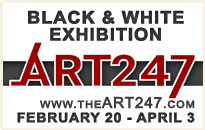Search ENP
Powered by Blogger.
ENP Home
Posts By Category
Posts By Location
Posts By Date
-
►
2015
(3740)
- December (259)
- November (308)
- October (338)
- September (345)
- August (221)
- July (277)
- June (360)
- May (299)
- April (263)
- March (379)
- February (289)
- January (402)
Upcoming Events
Wednesday, March 26, 2014
2:27 PM
| | Edit Post
“If enough states did this, we would change the landscape of how we choose a president,” said state Sen. George Maziarz, one of the co-sponsors of S.3149-A, the Senate version of the bill. “Too often presidential candidates campaign in a handful of swing states and ignore all the others. This bill would make New York’s votes matter more than ever and it would make sure that presidential candidates pay attention to our state and ultimately are more accountable to our state.”
While the Electoral College itself would remain in tact, states are free to allocate their votes any way in which they determine, meaning if enough states sign on to the National Popular Vote agreement — enough to total 270 electoral votes — it would assure that whichever candidate receives the most total votes nationwide would become president. The agreement dictates that none of the states which have signed on would allocate their votes to the popular vote winner until enough states sign on to equal 270.
So far, nine states and the District of Columbia have signed the measure, accounting for 136 electoral votes. If New York's bill is signed by Gov. Andrew Cuomo, it would increase the total to 165 electoral votes. New York would be the second largest state, behind California's 55 electoral votes, to join the effort.
All nine of the states that have approved the measure are states that typically vote for the Democratic candidate. They are California, Hawaii, Illinois, Massachusetts, Maryland, New Jersey, Rhode Island, Vermont, Washington, and the District of Columbia. New York is also a "safe" blue state.
Legislation has also passed both houses of the Colorado legislature but has not yet been signed by Gov. John Hickenlooper, a Democrat. Nine other states have had bills pass one of their two legislative bodies — Arkansas, Connecticut, Delaware, Maine, Michigan, Nevada, New Mexico, North Carolina, and Oregon.
Proponents of the bill note that the nation is nearly evenly split electorally between Democratic-leaning and Republican-leaning states, excluding a handful of states which "swing." In the 2012 presidential election, President Barack Obama and Gov. Mitt Romney spent the vast majority of their post-convention time in those "swing states," primarily in Ohio, Florida, Virginia and Iowa. Additionally, voters in so-called "safe states," including New York, seldom see presidential candidates due to the need for candidates to campaign in the swing states.
As the wording in Senate bill states, "... in the Presidential elections of 2000 and 2004, the winners were selected based upon the outcomes of elections in one state or less because of their weight in the Electoral College. The 'winner take all' system is no longer adequate, and the voice of millions of Americans should not be concentrated into the outcome of one state's election."
"For too long New York has been irrelevant in choosing our president," Maziarz added. “This agreement will change that by making sure the voice of the majority of our citizens is heard.”
"The National Popular Vote bill is about empowering the only true voice of the people to elect the president. Common Cause/NY is proud to see the the Legislature bring the country one step further in pursuit of a more equitable democracy by passing this important legislation," said Susan Lerner, Executive Director of Common Cause/NY, a non-profit, non-partisan advocacy group.
Dissenters point to the long history of the Electoral College and say changing the way a president is elected should be done by changing the Constitution.
The New York Senate bill was sponsored by Republican Sen. Joseph Griffo — and co-sponsored by Maziarz and numerous others. The Assembly counterpart was sponsored by Democratic Assemblyman Jeffrey Dinowitz. Assemblywoman Jane Corwin, R-Clarence, voted in favor of the bill.
Various versions of the bill have been introduced yearly dating back to 2006. What was originally introduced by five members of the Assembly has grown to what it is today. In 2010 and 2011, it passed the Senate but failed the Assembly. In 2013, it passed the Assembly but the Senate never considered it. Now it has been approved in the Senate by a 57-4 margin and in the Assembly by a 100-32 margin and simply awaits the governor's signature.
Follow us by email for daily updates of all our stories delivered straight to your inbox.
Subscribe to:
Post Comments
(Atom)









0 comments:
Post a Comment
Comments are always appreciated. Your comment will be reviewed for approval before being made public.